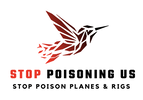PRESS RELEASE: PRELIMINARY STUDY: Cotton Defoliant Overspray & Spray Drift Likely Cause of Widespread and Persistent Vegetation Death in the Narromine-Trangie AreaPress Release by Macquarie Valley Landcare Group Inc, 17 November 2021
.
|
PRESS RELEASE: PRELIMINARY STUDY: COTTON DEFOLIANT OVERSPRAY & SPRAY DRIFT LIKELY CAUSE OF WIDESPREAD AND PERSISTENT VEGETATION DEATH IN THE NARROMINE-TRANGIE AREA
Press Release Issued by Macquarie Valley Landcare Group Inc, 17 November 2021
Preliminarily Independent Study by Respected Central West Scientist Suggests Cotton Defoliant Overspray Likely Cause of Widespread and Persistent Vegetation Death in the Narromine-Trangie Area.
An independent preliminary report, commissioned by Macquarie Valley Landcare Group Inc, suggests there is a prima facie case that overspray and drift from aerially applied cotton defoliants, is the likely cause of the severe damage to vegetation, native and non-native, readily observable in the Narromine-Trangie area. The preliminary report has been prepared by respected regional scientist Professor David Goldney AM.
Prof Goldney is very suited to comment on vegetation death, given his background in plant physiology, ecology, and a fifty-year history of working proactively with farmers across the Central Western region to better integrate nature conservation and production agricultural outcomes.
Prof Goldney said that many cotton growers themselves are deeply concerned about the long-term impacts of the many chemicals used in cotton production on the long-term health of their farms and their families. He noted that some of the chemicals used in cotton production are already banned overseas.
Prof Goldney emphasized that this is a preliminary report, with a more detailed report being available before Christmas or early in the New Year, depending on the availability of information he is seeking from the New South Wales Government and other sources. He is hopeful that a literature review may also shed light on other community concerns about the possible impacts of cotton production chemicals on human and animal health, the health of creeks and rivers, as well as collaborating evidence of the impacts on vegetation and biodiversity.
When asked why he thought that vegetation death and damage in the Narromine-Trangie area was not due to the impacts of the last severe drought, 2017-2020, he indicated that drought was likely a minor contributor. However, David went on to comment that in similar farming landscapes where cotton is not grown, the vegetation has bounced back without the damage observable in the Narromine-Trangie area. He went on to say that this suggests that drought can be ruled out as a causative agent to the observable local vegetation damage.
Prof Goldney has urged all citizens and local governments to keep an open mind on this issue and that together we seek the truth around this important community problem. In his opinion, his findings in the Narromine-Trangie area likely apply to other cotton growing areas in NSW.
Prof Goldney says he is willing to be interviewed by the media about this important community matter. He can be contacted on 0417 460 935.
A local spokesperson for the group can be contacted on 0428 890 110.
A copy of his preliminary report is attached for the media’s further consideration.
Preliminarily Independent Study by Respected Central West Scientist Suggests Cotton Defoliant Overspray Likely Cause of Widespread and Persistent Vegetation Death in the Narromine-Trangie Area.
An independent preliminary report, commissioned by Macquarie Valley Landcare Group Inc, suggests there is a prima facie case that overspray and drift from aerially applied cotton defoliants, is the likely cause of the severe damage to vegetation, native and non-native, readily observable in the Narromine-Trangie area. The preliminary report has been prepared by respected regional scientist Professor David Goldney AM.
Prof Goldney is very suited to comment on vegetation death, given his background in plant physiology, ecology, and a fifty-year history of working proactively with farmers across the Central Western region to better integrate nature conservation and production agricultural outcomes.
Prof Goldney said that many cotton growers themselves are deeply concerned about the long-term impacts of the many chemicals used in cotton production on the long-term health of their farms and their families. He noted that some of the chemicals used in cotton production are already banned overseas.
Prof Goldney emphasized that this is a preliminary report, with a more detailed report being available before Christmas or early in the New Year, depending on the availability of information he is seeking from the New South Wales Government and other sources. He is hopeful that a literature review may also shed light on other community concerns about the possible impacts of cotton production chemicals on human and animal health, the health of creeks and rivers, as well as collaborating evidence of the impacts on vegetation and biodiversity.
When asked why he thought that vegetation death and damage in the Narromine-Trangie area was not due to the impacts of the last severe drought, 2017-2020, he indicated that drought was likely a minor contributor. However, David went on to comment that in similar farming landscapes where cotton is not grown, the vegetation has bounced back without the damage observable in the Narromine-Trangie area. He went on to say that this suggests that drought can be ruled out as a causative agent to the observable local vegetation damage.
Prof Goldney has urged all citizens and local governments to keep an open mind on this issue and that together we seek the truth around this important community problem. In his opinion, his findings in the Narromine-Trangie area likely apply to other cotton growing areas in NSW.
Prof Goldney says he is willing to be interviewed by the media about this important community matter. He can be contacted on 0417 460 935.
A local spokesperson for the group can be contacted on 0428 890 110.
A copy of his preliminary report is attached for the media’s further consideration.
| david_goldney_preliminary_report_november_2021_07112021__003_.pdf | |
| File Size: | 877 kb |
| File Type: | |
Your browser does not support viewing this document. Click here to download the document.
